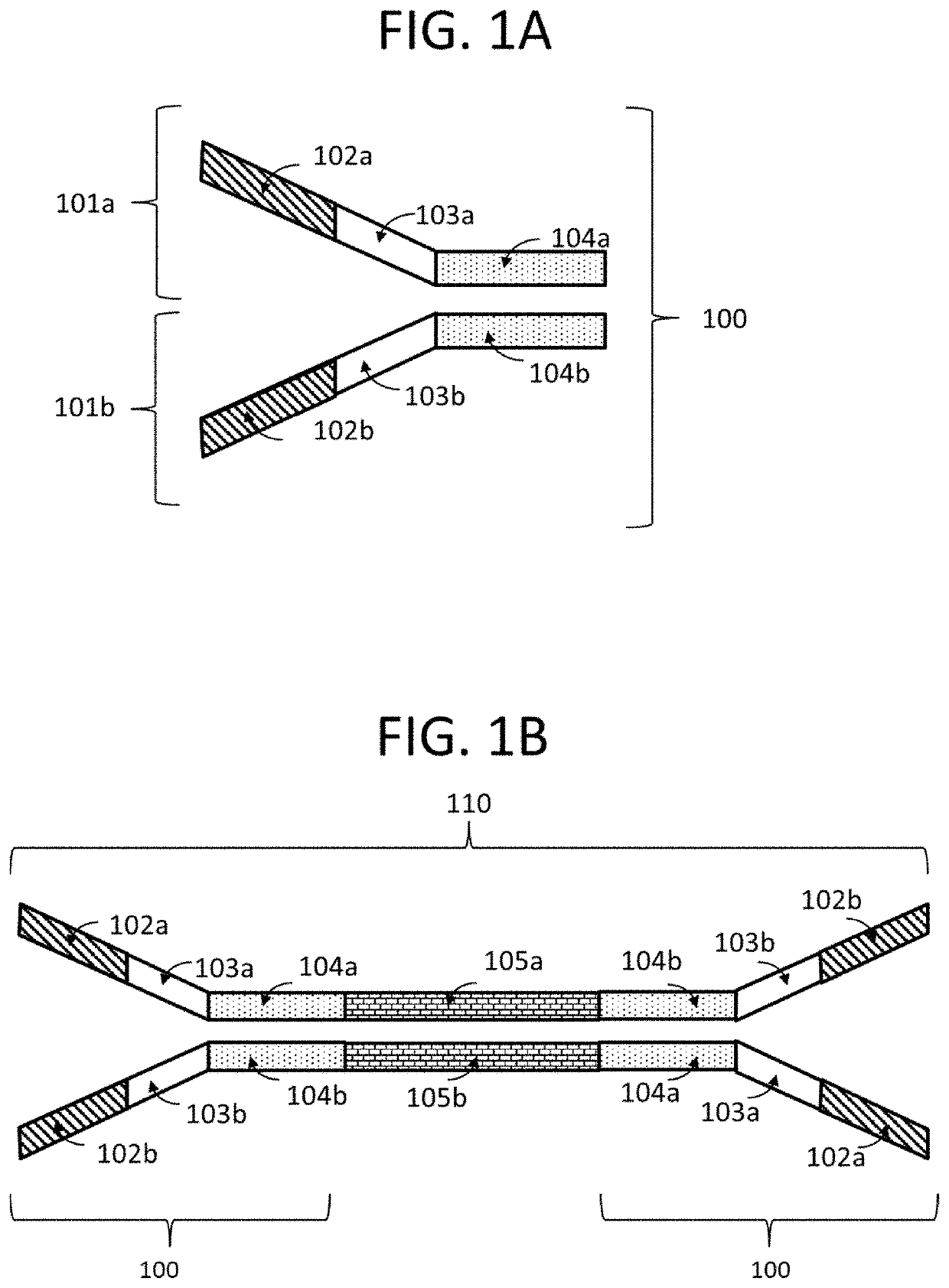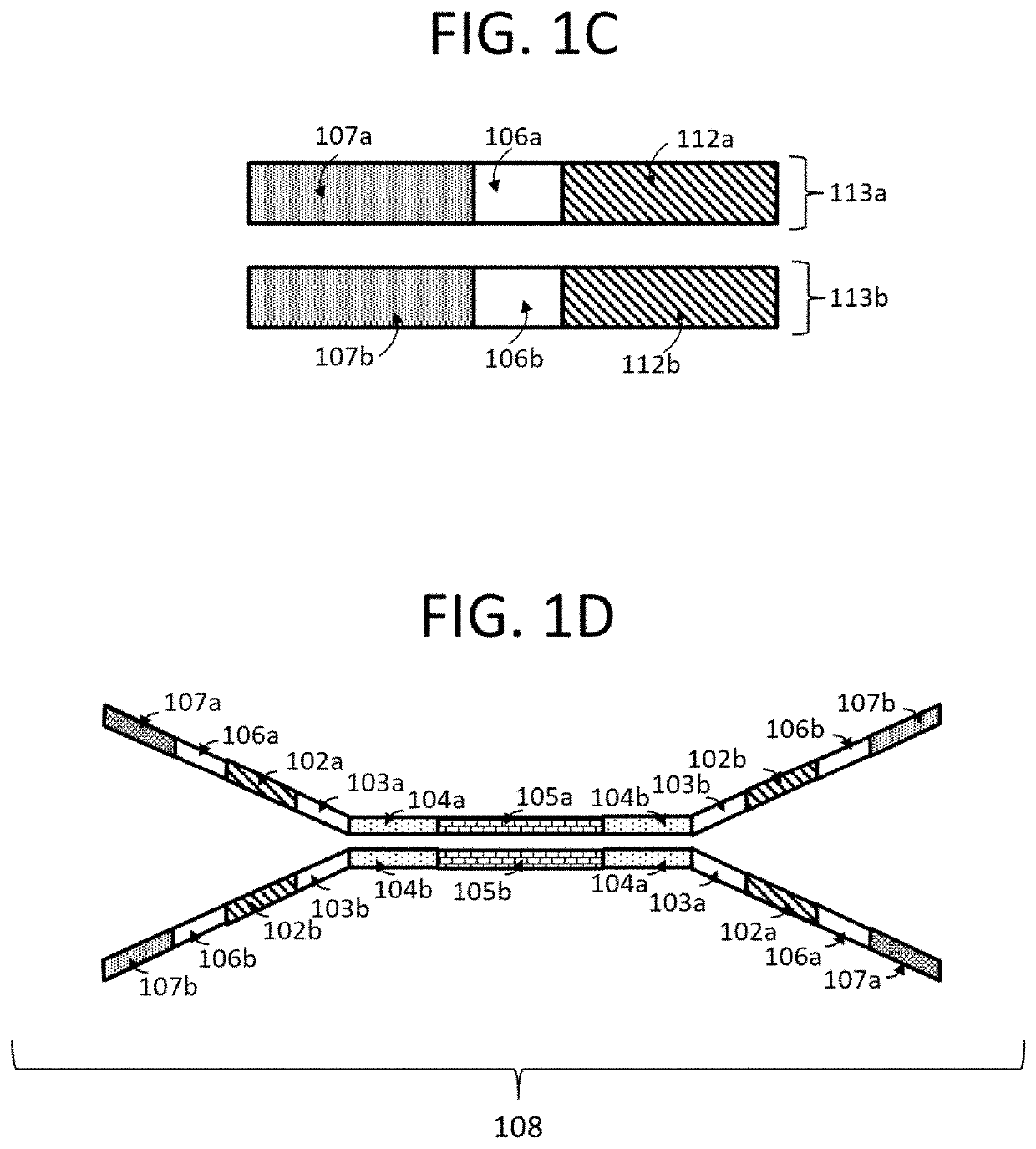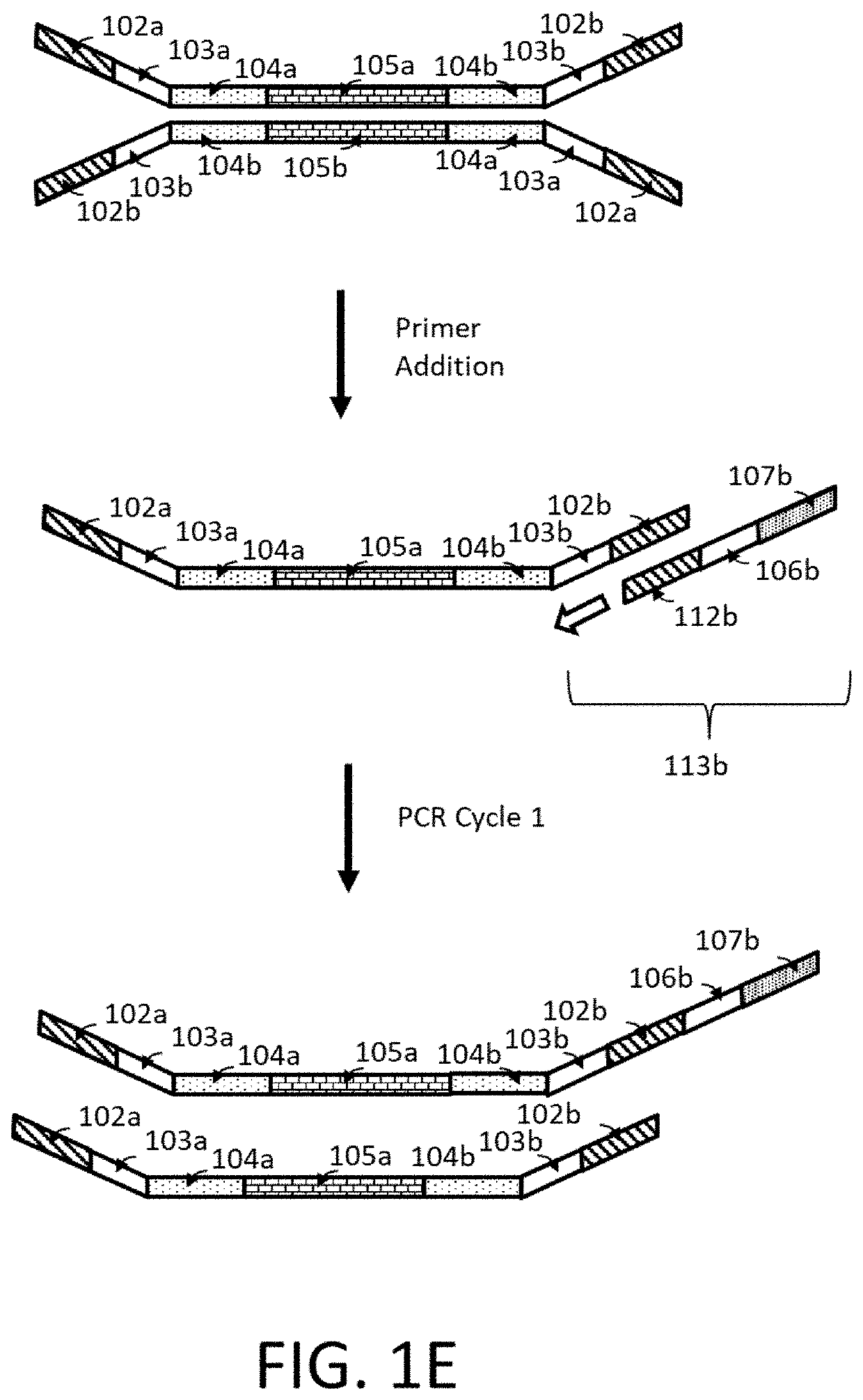Compositions and methods for next generation sequencing
a technology of next-generation sequencing and compositions, applied in the field of compositions and methods for next-generation sequencing, can solve the problems of scalability, automation, speed, accuracy, cost, etc., and achieve the effect of increasing binding
- Summary
- Abstract
- Description
- Claims
- Application Information
AI Technical Summary
Benefits of technology
Problems solved by technology
Method used
Image
Examples
example 1
lization of a Substrate Surface
[0271]A substrate was functionalized to support the attachment and synthesis of a library of polynucleotides. The substrate surface was first wet cleaned using a piranha solution comprising 90% H2SO4 and 10% H2O2 for 20 minutes. The substrate was rinsed in several beakers with DI water, held under a DI water gooseneck faucet for 5 minutes, and dried with N2. The substrate was subsequently soaked in NH4OH (1:100; 3 mL:300 mL) for 5 minutes, rinsed with DI water using a handgun, soaked in three successive beakers with DI water for 1 minute each, and then rinsed again with DI water using the handgun. The substrate was then plasma cleaned by exposing the substrate surface to O2. A SAMCO PC-300 instrument was used to plasma etch O2 at 250 watts for 1 minute in downstream mode.
[0272]The cleaned substrate surface was actively functionalized with a solution comprising N-(3-triethoxysilylpropyl)-4-hydroxybutyramide using a YES-1224P vapor deposition oven system...
example 2
of a 50-Mer Sequence on a Polynucleotide Synthesis Device
[0274]A two dimensional polynucleotide synthesis device was assembled into a flowcell, which was connected to a flowcell (Applied Biosystems (ABI394 DNA Synthesizer”). The polynucleotide synthesis device was uniformly functionalized with N-(3-TRIETHOXYSILYLPROPYL)-4-HYDROXYBUTYRAMIDE (Gelest) was used to synthesize an exemplary polynucleotide of 50 bp (“50-mer polynucleotide”) using polynucleotide synthesis methods described herein.
[0275]The sequence of the 50-mer was as described in SEQ ID NO.: 1. 5′AGACAATCAACCATTTGGGGTGGACAGCCTTGACCTCTAGACTTCGGCAT##TTTTTTTTT T3′ (SEQ ID NO.: 1), where # denotes Thymidine-succinyl hexamide CED phosphoramidite (CLP-2244 from ChemGenes), which is a cleavable linker enabling the release of polynucleotides from the surface during deprotection.
[0276]The synthesis was done using standard DNA synthesis chemistry (coupling, capping, oxidation, and deblocking) according to the protocol in Table 2 and...
example 3
of a 100-Mer Sequence on a Polynucleotide Synthesis Device
[0279]The same process as described in Example 2 for the synthesis of the 50-mer sequence was used for the synthesis of a 100-mer polynucleotide (“100-mer polynucleotide”; 5′ CGGGATCCTTATCGTCATCGTCGTACAGATCCCGACCCATTTGCTGTCCACCAGTCATGCT AGCCATACCATGATGATGATGATGATGAGAACCCCGCAT##TTTTTTTTTT3′, where # denotes Thymidine-succinyl hexamide CED phosphoramidite (CLP-2244 from ChemGenes); SEQ ID NO.: 2) on two different silicon chips, the first one uniformly functionalized with N-(3-TRIETHOXYSILYLPROPYL)-4-HYDROXYBUTYRAMIDE and the second one functionalized with 5 / 95 mix of 11-acetoxyundecyltriethoxysilane and n-decyltriethoxysilane, and the polynucleotides extracted from the surface were analyzed on a BioAnalyzer instrument (data not shown).
[0280]All ten samples from the two chips were further PCR amplified using a forward (5′ATGCGGGGTTCTCATCATC3; SEQ ID NO.: 3) and a reverse (5′CGGGATCCTTATCGTCATCG3; SEQ ID NO.: 4) primer in a 50 uL...
PUM
| Property | Measurement | Unit |
|---|---|---|
| Tm | aaaaa | aaaaa |
| temperature | aaaaa | aaaaa |
| temperature | aaaaa | aaaaa |
Abstract
Description
Claims
Application Information
 Login to View More
Login to View More - R&D
- Intellectual Property
- Life Sciences
- Materials
- Tech Scout
- Unparalleled Data Quality
- Higher Quality Content
- 60% Fewer Hallucinations
Browse by: Latest US Patents, China's latest patents, Technical Efficacy Thesaurus, Application Domain, Technology Topic, Popular Technical Reports.
© 2025 PatSnap. All rights reserved.Legal|Privacy policy|Modern Slavery Act Transparency Statement|Sitemap|About US| Contact US: help@patsnap.com



